Every big game hunter, prepper and survivalist needs a selection of knives for processing the meat of large animals.
But at some point, you may need to reduce a steer, hog, sheep, goat or large game animal into neatly-wrapped packages of meat for the freezer. What are three knives that can do the job?
by Leon Pantenburg
Disclaimer: Knivesshipfree.com, DLT Trading and L.T. Wright Custom Knives are are excellent companies, and I use their product a lot. But none of these companies had any input into this post, nor did I get any free knives. This is strictly my opinion, and all I ever promise is a fair shake.
At home, you may have all the tools and accessories needed to make this job do-able. But what knives should you carry when hunting the backcountry?
What if you’re on your own, with no outfitter to haul in meatcutting tools and take the meat out on a pack horse? Even if the big game carcass will be taken to a commercial meat cutter later for processing, you’ll still have to gut, skin and possibly quarter the animal.
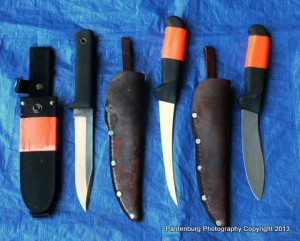
I’ve these knives extensively for backcountry big game hunting. From left, Cold Steel SRK, Forshner six-inch boning knife, and a five-inch sheep skinner.
Or, in my case, what knife (knives) should a lone hunter take? I frequently hunt southeastern hardwood forests and swamps, and it is common to kill a deer, and have to pack it out to the nearest road. This could be a couple miles.
To handle this situation, you need a knife (or knives) that will do a passable job of gutting, skinning, quartering and possibly boning out the carcass. To reduce weight, the lower legs and head must be cut off.
After hunting the west, parts of the Midwest and the eastern United States for several decades, my backcountry knife selection has been refined. The knives I carry work well in the mountains, high desert, and southeastern swamps and forests.
Generally speaking, you will probably need knives in three categories: gutting, skinning and boning.
The hunting method my brother, Mike, and I use to hunt elk or deer in the mountains can be pretty hardcore. We’ve hunted together since he was 12 (decades ago!), and the usual routine is to work together as a team, but hunt separately.
Before we take off from the base camp, a morning hunt is planned, and we know the area each other is hunting. We’ll pick a rendezvous site for lunch. If an animal is down, we go take care of it. If not, the afternoon hunt is planned.

This style of hunting involves a lot of walking and glassing, and every ounce counts. Nothing is taken along that hasn’t been carefully weighed, discussed and considered.
So, based on that criteria and my prejudices, here’s my choices for what knives to take along on a hunt where you are out all day, far from the roads:
Gutting and skinning: This blade needs to be narrow enough to do the under the tail work on a deer or elk, but be strong enough to split the ribcage and disjoint the legs.
Cold Steel SRK: For nearly 20 years, my one knife for field dressing and skinning a big game animal, was a Cold Steel SRK. The initials stand for “Survival Rescue Knife” and it would be a great choice for that. I bought my SRK in 1991, when I moved to Idaho. The knife’s performance was so impressive that two of my elk-hunter friends bought SRKs.
My SRK has field-dressed well over 50 whitetails, been used on several elk, and is a very practical survival knife. In one instance, I quartered three deer without the SRK needing sharpening. But today, the SRK rests in honored retirement and my knives have been steadily upgraded.
Bark River Knives puts out some cutlery that works really well in that gutting/skinning category. I’ve reviewed 54 BRs, and the knives have always performed really well. In the last few years, I’ve used the Bravo 1.25 LT and Ambush Tundra, to my complete satisfaction.
New in 2020 was the UP (Upper Peninsula) Bravo, a knife I lobbied for and had a tiny bit of input into. The UP may end up being the ultimate hunting knife, for me at least.
I tried out the Bark River Kalahari and the Sahara in 2014, when they were new on the market. They fit my personal gutting/skinning knife requirements. Both worked splendidly on Mississippi deer hunts and Oregon elk hunts.
The next two knife choices I learned about in college. I worked at the Hy-Vee #1 grocery store in Ames, Iowa and quizzed the meatcutters about their favorite knives.
The guys in the clean white coats and hats could order any knife they wanted from any commercial knife catalog. They didn’t agree on the best overall knife, naturally, but I made my choices for skinning and boning knives based on their input. Here’s what I came up with originally:
Forshner Lamb Skinner: The name refers to a style originally used, I imagine, for skinning sheep somewhere. This commercial butcher knife features a five-inch upswept blade, and a large handle. A standard sheep skinner comes with a blunt tip, which I filed down from the top edge into a point.
My updated choice would be a smaller skinning knife, since the gutting blade can also be used for skinning.
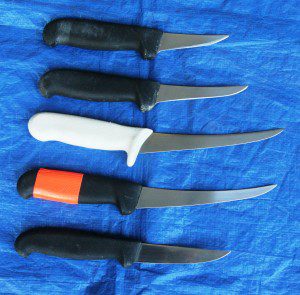
I experimented with various boning knife blade lengths. The winner in this category is the five-inch.
Five-to-six inch Forshner Boning Knife: This knife also works well for filleting fish, and should have a thin, flexible blade. Mike and I usually carry one boning knife between us. The boning knife can be considered a specialized tool, but when you need one, it’s worth that extra weight!
I field tested the Bark River Kalahari Sportsman knife in 2014, and it is the best boning/fillet knife I’ve ever used. The Sportsman is also the most-used knife in my kitchen, and has a permanent home on the knife rack.
Here’s another knife to consider:
Swiss Army Knife Classic: Yeah, you read that right. The Classic is the smallest Swiss Army knife, it fits on a keyring, and that’s why I carry it.
The Classic is a folder that weighs one ounce and has a tiny blade that is virtually useless for hunting. But it also has a scissors, nail file (with the tip modified to fit the hinge on my glasses), toothpick and most importantly, a tweezers. This little knife could be a godsend if you get a splinter in your hand.
But the glasses screwdriver could literally save the hunt. If you’re like me, you can’t see without your glasses, and if you can’t see the hunt is over. The modified Classic could end up being your most important knife!
So those are some suggestions for backcountry hunting knives. But blade steels should be mentioned.
For years, I carried an EZ Lap diamond sharpener, because at some point during the field dressing process my blade would have to be touched up.
But I never needed to sharpen any of my Bark Rivers. The way CPM 3V and A-2 steels hold an edge is nothing short of astounding. The A-2 Sahara blade, for example, was used to gut, skin and quarter a Mississippi buck. Then I cut off the head, and all four legs at the knee joints. The knife was used to cut and process the meat, and later to carve the Thanksgiving turkey. After all that, the blade was still shaving sharp!
When all the discussion is over, you decide what knives become part of your backcountry hunting gear. Think about choices, and know how to use them.
Then, when you stand over that fallen big game animal in the backcountry, take a moment to be thankful before getting to work. You are doing something many people can only dream about!
Please click here to check out and subscribe to the SurvivalCommonSense.com YouTube channel – thanks!
Please subscribe to the Survival Common Sense website
And the Youtube channel


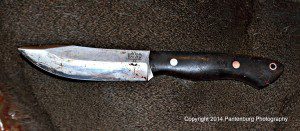
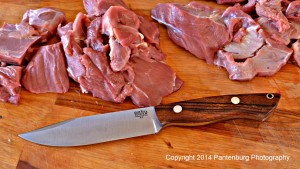
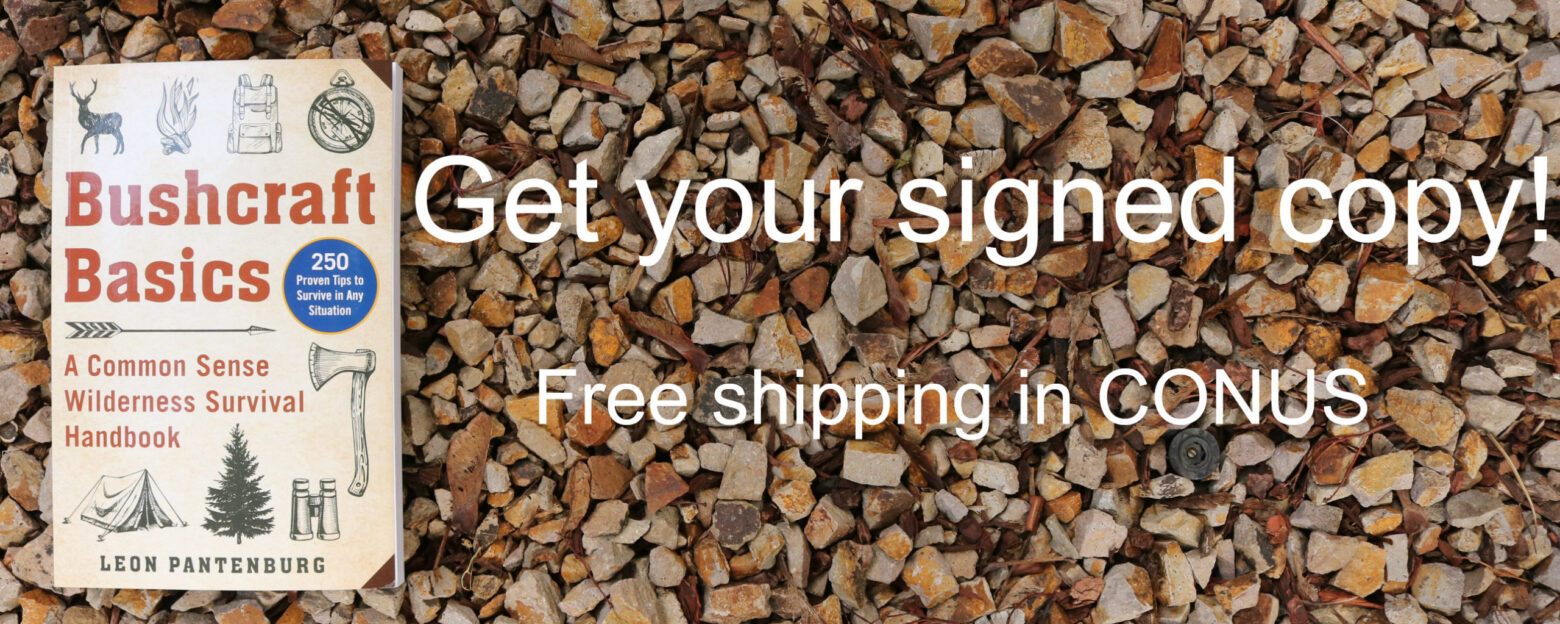
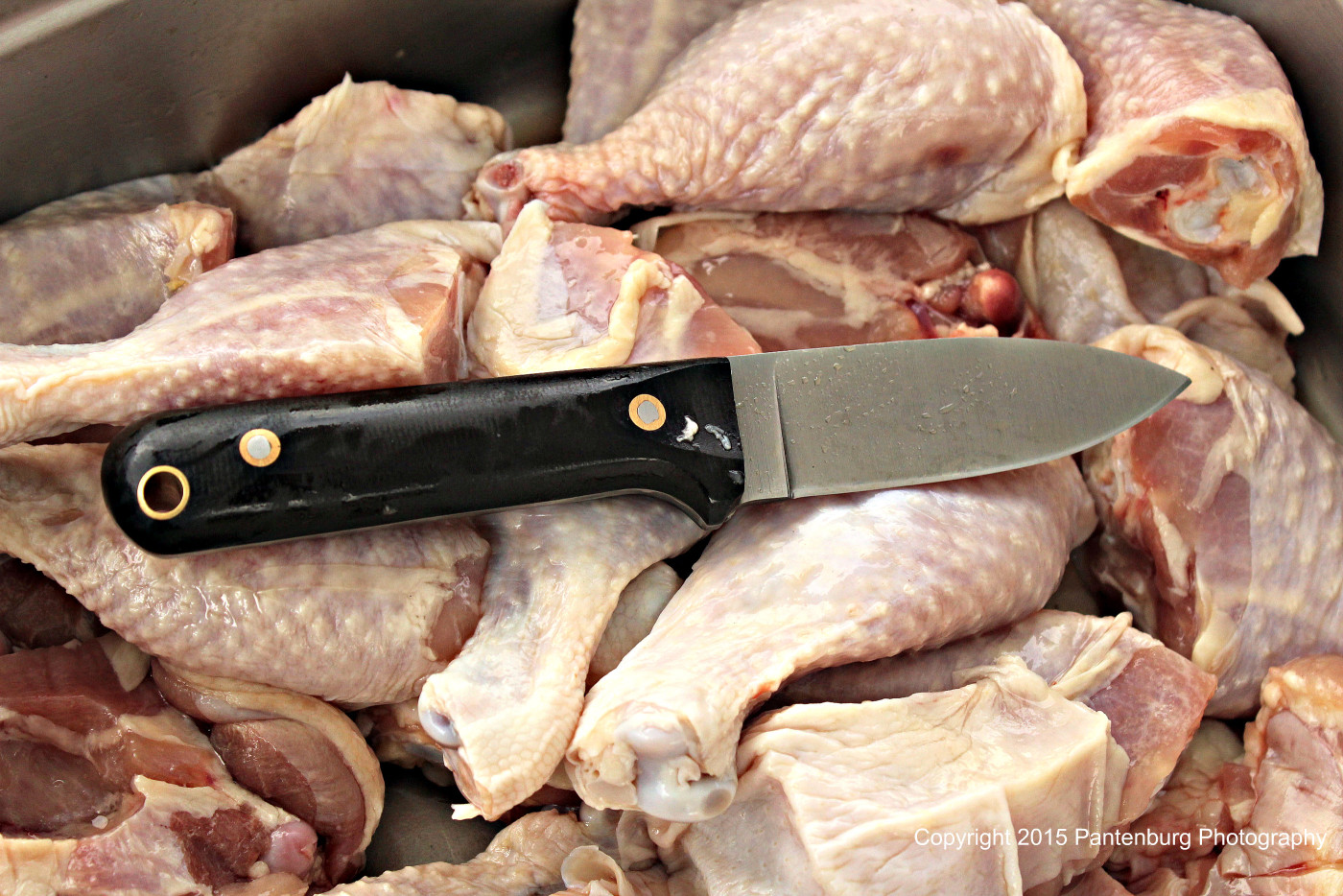

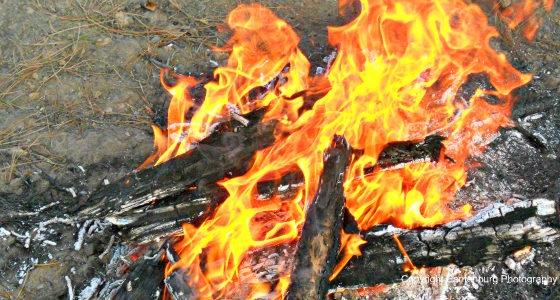
Leave a Reply